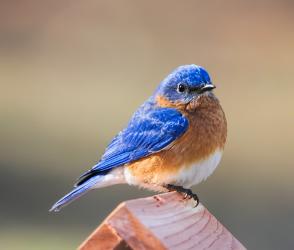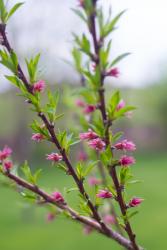Mid to late January
Try sprouting a test sample of leftover seeds before ordering new seeds for spring. (Roll up 10 seeds in a damp paper towel. Keep moist and warm. Check for germination in a week. If fewer than half sprout, order fresh seed.)
Early February
Begin to fertilize houseplants as they show signs of new growth. Plants that are still resting should receive no fertilizers yet.
February 18
Black History Celebration at the Missouri Botanical Garden.
Mid to late February
Now is a good time to apply appropriate sprays for the control of lawn weeds such as chickweed and dandelion.
March 1-15
Trees, shrubs and perennials may be planted as soon as they become available at local nurseries.
Fertilize the garden as the soil is being prepared for planting. Unless directed otherwise by a soil test, 1 to 2 pounds of 12-12-12 or an equivalent fertilizer per 100 square feet is usually sufficient.
Set up nesting boxes for bluebirds.
March 11-25
Summer and fall blooming perennials should be divided in spring.
Apply a balanced fertilizer such as 6-12-12 to perennial beds when new growth appears.
March 15 - 31
Thin spots and bare patches in the lawn can be overseeded now.
Set out broccoli, cabbage, brussels sprouts, Chinese cabbage and cauliflower transplants into the garden.
Peaches and nectarines should be pruned just before they bloom.
Apply dormant oil sprays now. Choose a dry day when freezing temperatures are not expected.
Events
• Science and sustanability open house March 9
• Orchid show through March 25
• Morpho Mardi Gras at the Butterfly House through March 25
• Seasonal reopenings of the Children's Garden, Trams, Tower Grove House, and Café Flora, March 30-31







